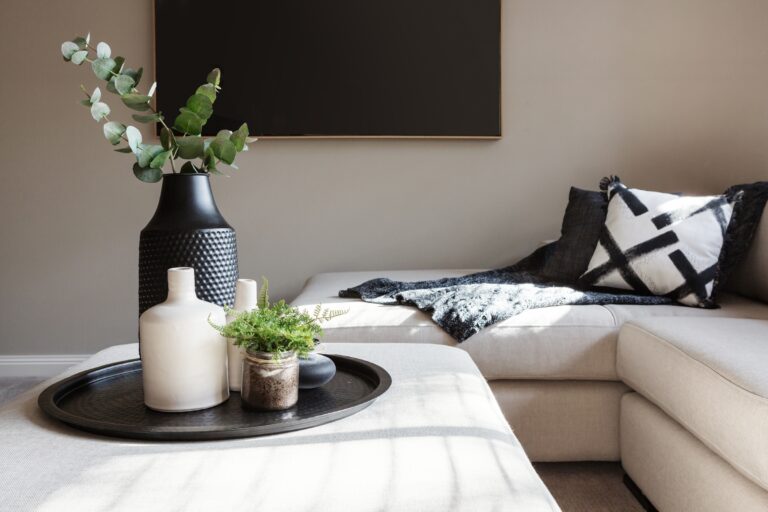Ever wonder why certain interior design businesses seem to effortlessly thrive while others struggle to survive?
While I promise their success is not effortless, through our interviews with successful interior designers and business coaches, we’ve learned a lot about what sets profitable businesses apart.
From analyzing project profitability to outsourcing smartly to tracking business goals, here are 7 things that profitable interior designers do differently to ensure their business continues to thrive for years to come.
Table of Contents
1. Double down on two or three marketing strategies that work
Once you find what works, keep doing it.
Marketing strategies that can work well for interior designers include:
- Attending local events
- TikTok
- SEO
- Google ads
- PR
- Referral swaps and other business partnerships
But you absolutely do NOT have to do all of those, nor should you.
The most profitable interior designers discover (through testing and measuring) which two or three marketing strategies actually yield ROI for their time and money investments. Then, they continue to invest in these strategies and often ignore other tactics.
2. Get paid upfront
Charging upfront ensures that you never get stiffed. Upfront payments not only protect your revenue, but they also clarify costs for clients so there are less surprises.
As Interior Design Fractional CFO Megan Dahle says, “I’ve never come across a really successful designer that bills in arrears. It’s an authority position to demand your money upfront and people respect it. If you frame it correctly, you stand in your power behind it, and you’re confident in it, then clients see it as just the normal thing.”
If you offer design-only projects, you can simply charge a flat rate upfront for designing the rooms. But if you also offer project management and installation services, you can use Nancy Ganzekaufer’s hybrid-flat-rate-and-hourly method. You’ll charge flat rate for the design, and then charge a bulk of hours for project management. Once you use those hours, get paid for another bulk before continuing.
3. Analyze what makes a project profitable
Have you noticed that you can work 8 hours on one project and 20 hours on another and get paid the same amount?
If you don’t proactively duplicate profitable projects, your take-home income will plateau.
Here’s how to do this right:
First, track how many hours you’re spending on any client project from the moment the deal is sealed (even if you’re not billing hourly). At the end of each project, calculate exactly how much you made per hour. On a quarterly basis, write down which projects you made the highest hourly rate and which projects you made the lowest.
Ask yourself what was different about the projects:
- Where did you spend more time?
- Was it a case of taking on a difficult client that you should have said no to?
- Were there specific areas in your process that could have been more organized and streamlined?
- Could you have made more by sourcing trade products with higher margins?
- If you’re allowing clients to buy the items themselves, could you have used affiliate links to earn commissions on all sales?
- And the big one… Are you charging enough or do you need to increase your rates?
When you know where the problems are, you can take steps to solve them and create a process that consistently brings in more profit.
4. Saying no to projects that will lower their profitability
Successful interior designers are totally okay with saying “No” to projects that they suspect aren’t a good fit.
Here are a few reasons why a profitable designer might pass on a project:
- The client is giving off red flags, such as complaining about working with a former designer or appearing very indecisive or is overly focused on cost.
- The scope of the project is too small to be worthwhile.
- There’s no likelihood of working with this client again on another room or project.
- The client’s budget is unrealistic.
The busier and more in-demand a designer is, the pickier they can become.
It can be hard to turn a job away when you’re not in demand yet, but keep in mind that difficult projects always come with a cost. You can’t grow a successful business on challenging clients and small-scope projects. If those are the only types of projects you’re attracting, you might be better off saying no to them and instead spending extra time crafting your brand story and revamping your specialization so you can start drawing in the right kind of client.
5. Outsource in a way that fits their business
Hustle culture promotes outsourcing as the holy grail of entrepreneurial bliss.
All you have to do is outsource, and suddenly you’ll have freedom.
But reality doesn’t work that way.
The truth is that some profitable interior designers outsource work to design assistants, and others don’t.
Don’t get caught up in the promise of outsourcing unless it’s what you truly want. Not everyone is good at managing other people.
If you outsource just for the sake of it, you could have drastically higher monthly business expenses, thus destroying your potential profits.
Consider outsourcing things that you absolutely hate or are terrible at (like bookkeeping and taxes, for example), and only outsource things you can do if you’re truly prepared to get ROI.
6. Get comfortable talking about money
Profitable designers can talk about money as easily as they talk about the weather.
They’re comfortable…
- Asking clients what they want to spend
- Letting clients know if their budget is too low or if the level of service will need to be modified to fit within their budget
- Informing previous clients of rate increases
If you struggle to ask clients about their budget, try this tip from full-service designer Monique Nicole, “The way that I teach my students and designers to really have this conversation, is to phrase the question in a way of, what are you comfortable with investing into this design project? And tell me what your high and what your low is. It’s different than asking, how much money do you have to invest because it feels less personal.”
7. Set and track specific business goals
Successful interior designers don’t allow themselves to plateau.
Instead, they set specific goals and track their progress.
Some example goals might be:
- To boost their mark-up revenue by 30%
- To improve their hourly project rate by 20% (even when charging flat rate, you can still track and improve your hourly rate)
- To take home 15% more income
- To test one new service offer each year and see what services convert the best
- To rank in positions 1-5 for a location-based keyphrase
There are so many different goals you can set. What’s important is that you actually set them and track them, instead of just hoping that your business will magically improve on its own.
Now it’s time to bookmark this article and make sure you’re remembering to do these things! It’ll make a huge difference.
Here at DesignFiles, we’re devoted to designers’ complete success! Check out our amazing design and business software and start your free trial.


